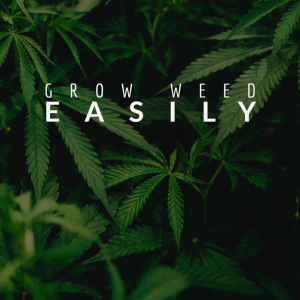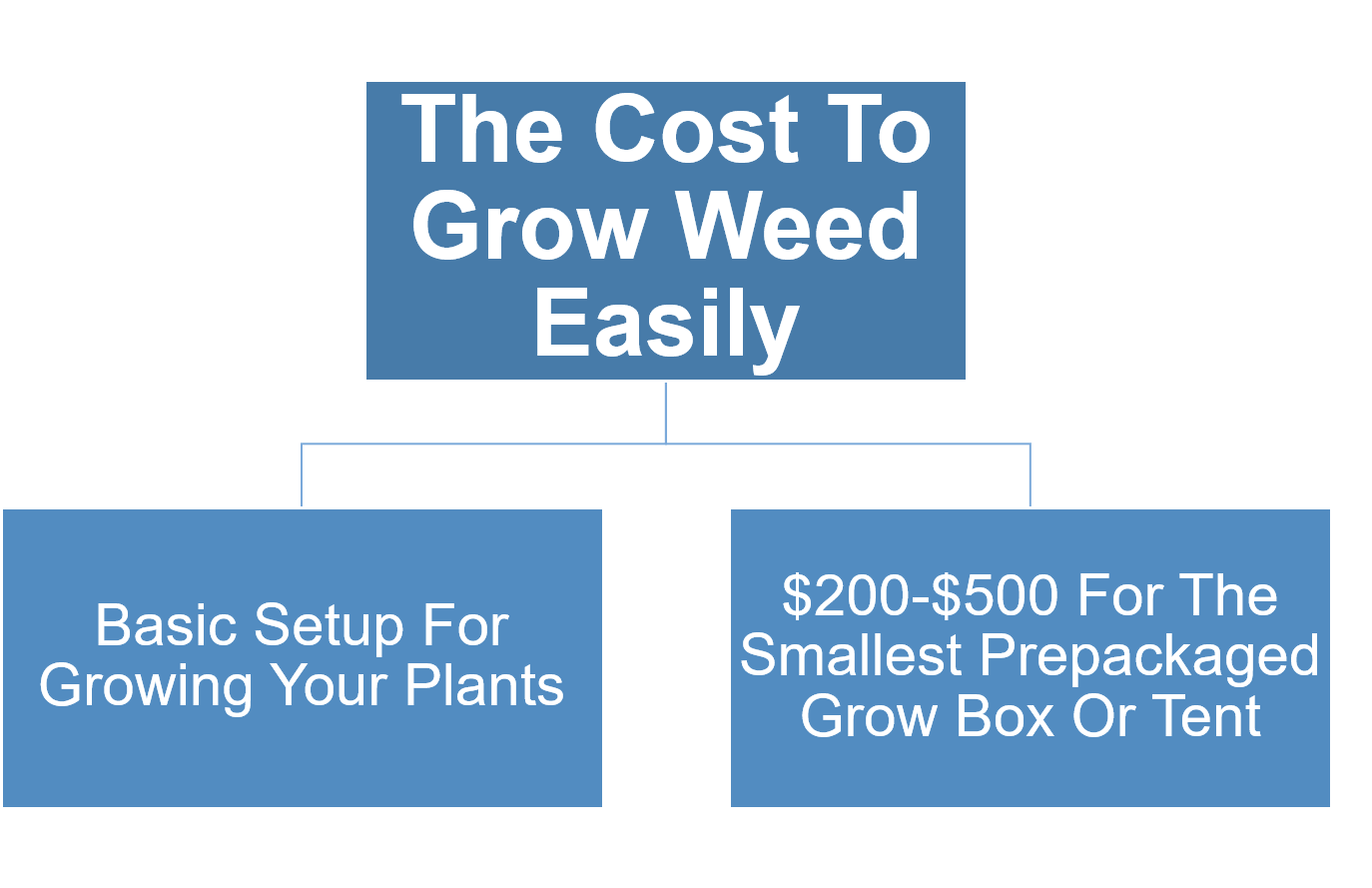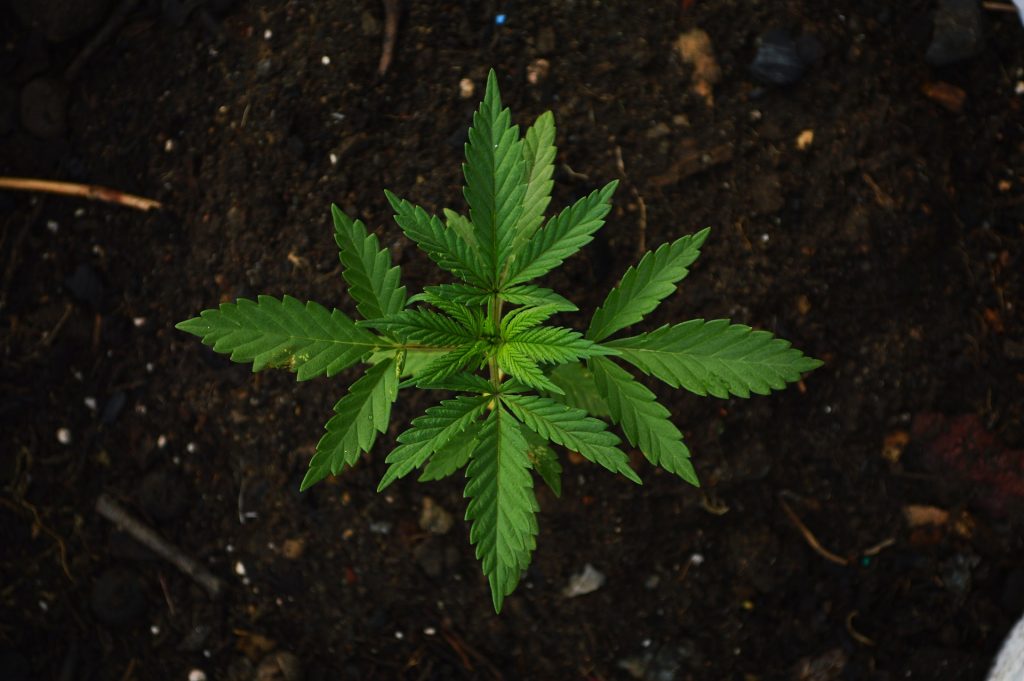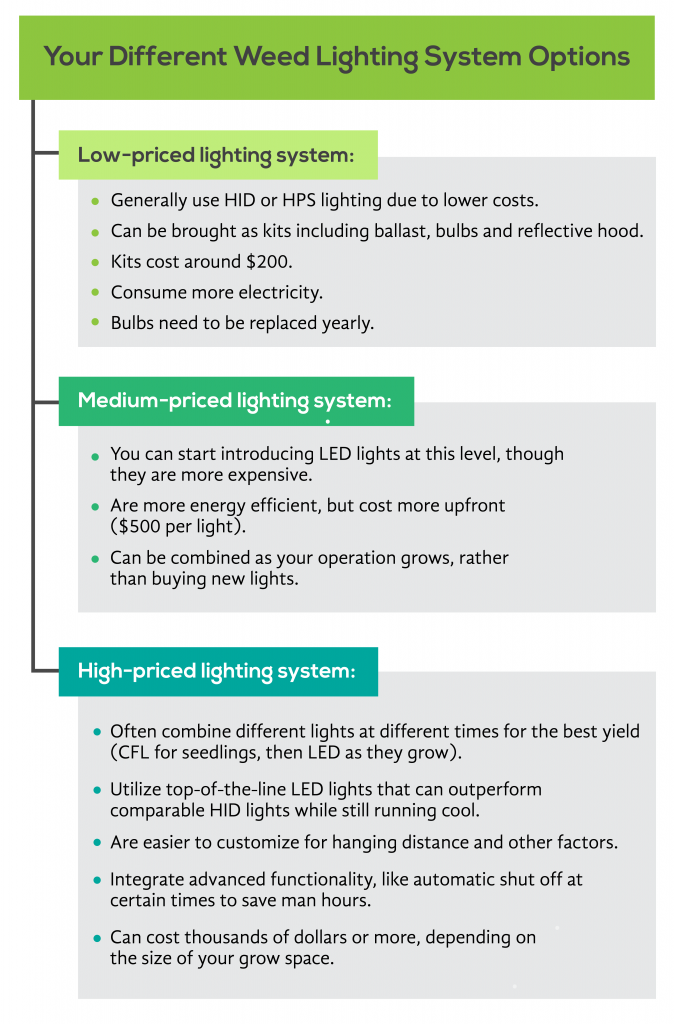 The marijuana industry is enjoying the legitimacy that it never had — From places like Canada (the second country to enforce federal legalization) to states like Colorado, California, and Illinois. Newcomer interest due to a growing and in-demand market. Before you start building your empire, there are a few things you need to know.
The marijuana industry is enjoying the legitimacy that it never had — From places like Canada (the second country to enforce federal legalization) to states like Colorado, California, and Illinois. Newcomer interest due to a growing and in-demand market. Before you start building your empire, there are a few things you need to know.
Growing marijuana is not a simple task. Having the proper knowledge of how to care for plants and increase yields is a necessity. In this article, we will give you a starter guide on how to grow weed quickly.
The Different Stages of Growing Weed
Stage 1: Germination
The germination process begins when the seed absorbs water. initiating several biochemical events necessary for seedling (Stage 2) development.
a). Wet Napkin
Place the cannabis seeds within a damp paper towel and set them in a sealable pliable container. The temperatures in the container should be between 20-25 °C. Make sure to review the precipitation and humidity levels routinely. Don’t fully seal the container. You want to provide some air transfer and keep it in a darkened space.
b). Submerged
Sink your seeds into a glass of drinking water and expect 24-48 hours until the seeds become cracked. When the first few millimeters of the root are visible, make sure water temperatures are within 20-25 °C. Set your cup someplace where light doesn’t reach it.
When it comes to this initial stage, your top priority is keeping the seeds safe as well as removing the sprouts without damaging rootlets.
Expert growers do this by hand. However, kits are available to make this process easier.
Stage 2: Seedling
- Starts when plants first sprout
- Lasts around two weeks
- Represents the plant being able to absorb chlorophyll
- At the end of this stage, the plant begins to resemble smaller versions of marijuana plants.
a). When your plant becomes a seedling, it will develop more of the traditional cannabis leaves.
b). As a sprout, the seed will initially produce leaves with only one ridged blade.
c). Once new growth develops, the leaves will produce more blades (1, 3, 5, 7, etc.). A mature cannabis plant will have between 5-7 blades per leaf, but some plants may have more.
d). Best practices here include keeping the seedling safe from pests and the elements if you are growing outdoors.
Stage 3: Vegetative Growth
Top priorities are developing strong roots and added branches for more yield
- Last 2 to 8 weeks depending on plants
- The plant will likely outgrow the starter medium at this point
a). At this point, the ideal relative humidity numbers go down to 50% for indoor growers.
b). However, care at this stage is a lot more dependant on the strain you are growing.
For example, auto flower cultivators may start flowering after only 2-3 weeks in this stage. While it’s possible to keep photoperiod strains in this stage indefinitely, this requires maintaining the plant in ideal conditions, such as 18 or more hours of light daily.
Stage 4: Flowering
- Focus shifts to the production of buds
- Lasts 6 to 12 weeks
- Determining the sex of a plant can occur within the first two weeks of flowering
a.) For flowering photoperiod strains, change the light schedule to a 12-12 hour set up indoors.
b.) Outdoors, plants will flower as summer turns into fall, and the number of natural daylight hours starts to drop.
While watching your plant flower, you will be able to determine when you are ready to harvest based on looking at the resin buds. It’s a good idea to invest in a small microscope to look closely and see when the resin is milky and amber-colored as opposed to clear. At this point, you are ready to harvest your crop.
The Cost To Grow Weed Easily
 There can be a minor cost of entry, and as the industry grows, the price will continue to get lower and lower.
There can be a minor cost of entry, and as the industry grows, the price will continue to get lower and lower.
- For example, if you want the complete basic setup for growing your plants, you are going to need to pay from $200-$500 for the smallest prepackaged grow box or tent.
2. If you want to have a little more control over what you end up producing. You’re better off installing a light system and building your own space.
We’ll get more into what this entails in a bit, but this is generally going to cost closer to $1,000, for a smaller size, and much more for a more extensive operation. Besides, you also want to keep in mind the costs of running electricity for lights roughly 12 hours a day.
Another thing we should mention in this discussion is that this revolves around what plants you use. Unlike a lot of other plants, it’s not the best idea to start with marijuana seeds, especially for novices.
Only female seeds provide the flowers that we associate with the effects of marijuana, and it can be difficult to tell the difference between these and the useless male seeds.
The alternative to seeds are clones, which are cuttings from a plant that are proven to flower. Skipping a step out of the process and helping you grow weed quickly.
Choosing And Staging A Good Grow Space
So, at this point, we have an idea of what the budget is behind growing space for your marijuana. But, is there a way for you to grow weed quickly with that space? It’s all in the construction.
There are a few factors that you need to keep in mind right from the start:
Space
Not that kind of space, yet you will be spaced out once your yield is ready.
Smaller growing spaces are more comfortable to monitor and less expensive, but you also want to have enough space to accommodate your fully-grown plants and additional equipment.
At this point, you may be curious about the best place to set up growing space. As you may know, there are three different options to choose from, each having their pros and cons.
Pros:
-
It gives you the most control over your growth (room temperature, air circulation).
-
Certain modern strains are designed to grow better indoors.
-
No need to worry about outside pests and animals.
-
It can provide the highest yields if grown correctly.
Cons:
-
At higher risk of toxins due to constrained space.
-
Costs the most due to purchasing planting space, lighting installations, etc
-
It may be challenging to find a planting space in a small home/apartment.
Outdoor Growing
Pros:
-
The least expensive of all options.
-
It generally requires a tent, soil, and sunlight.
-
It is the most “natural” way to grow weed.
-
Some strains grow differently in natural sunlight than they do in artificial light.
Cons:
- It only works in certain climates
- Exposes your plants to animals, pests, and the elements
- Plants may look less appealing aesthetically when grown outdoors. The idea of harvesting marijuana outdoors holds a lot of appeal to many would-be growers, and there are plenty of reasons why this is the case. For example, not only do you get to grow the plants naturally, but you also manage to avoid a lot of investments like grow lights, fans, and tarps.
- Generally, a tent, appropriate soil, and sunlight are the main components that you need. However, while it is possible, it’s not necessarily easy to grow outdoors. The main issue is the number of different variables that you don’t have control of in this setting. From temperature fluctuations to animals.
For example, while you may be able to save money on grow lights, you may need to use some of those savings to find a way to keep animals out. Also, it may not be possible to grow weed quickly outdoors, because the atmosphere may not be feasible in every garden nor every climate.
Greenhouse Growing
Pros:
- It allows you to use natural sunlight while keeping your plants protected.
- It can be an average cost between indoor and outdoor if you already have a greenhouse available.
- It lowers energy costs.
- It makes it possible to manipulate light exposure to trick plants into flowering earlier.
Cons:
-
If you don’t already have a greenhouse, it can be a significant investment.
-
Greenhouse growing is only possible at certain times of the year and is somewhat climate dependent.
Indoor growing
Pros:
- On paper, indoor growing seems like the easiest way for you to get started. Being able to grow your plants with full control over the situation.
2. Indoor installations allow you to have complete control over critical factors like room temperature and air circulation. Besides, some of the more modern strains out there are specifically designed to grow better in indoor environments.
Cons:
- However, with that control comes added responsibility and cost.
2. For example, if you fail to keep the area clean, you risk toxins contaminating the growing space.
It can be a bigger problem than other grow settings due to the constrained area. So, you may be able to grow weed quickly with an indoor environment, but you need to pay extra attention to the details.
Greenhouse
Pros:
- Greenhouse marijuana growing is built around using the sun along with light deprivation.
2. The primary benefit of this compared to growing indoors is that you have natural sunlight to promote a more diverse terpene profile.
3. Also, there is a far smaller environmental footprint than indoor growing.
4. Compared to outdoor growing, using a greenhouse provides a bit of protection from pests, while also allowing the grower to essentially “trick” the plant into flowering earlier using specific tactics.
Cons:
- The issue with greenhouses (besides the expense of setting one up) is that your plants are still subject to the outside climate in a way that indoor growers don’t have to deal with.
Air
Installing an exhaust fan is essential to make sure that your plants have the regular flow of fresh air that they need.
Ideally, the temperature range you want to reach is between 70 degrees and 85 degrees with the lights on, and 58 degrees and 70 degrees with the lights off.
Experienced growers can implement even more control with dehumidifiers and air conditioners, but if you want to grow weed quickly, it’s best to keep things simple.
Growing Medium
The two main options you have to grow weed quickly are organic soil or a “soilless” method using hydroponics.
The latter method involves using concentrated mineral salt nutrients and feeding the plant via osmosis.
The tradeoff is that this can lead to bigger yields than growing in soil, but it requires a lot more precision. In general, the ground is more beginner-friendly.
These are all key factors that you need to keep in mind, but there’s also one that’s so important, we want to give it its own specific time to shine (no pun intended).

Light And Your Marijuana Plants
Light is the most critical aspect of caring for your marijuana plants and is directly correlated with how large your yield is. For this reason, it’s essential not just to know your full breadth of options when it comes to grow lights, but also what the best match is for your grow space and budget.
As a start, there are three main types of grow lights on the market that you can look at:
- HID lights, also known as high-intensity discharge lights, are considered a favored standby because they can get the most intensity per watt.
- LED lights are the more modernized alternative, and are popular because they run cooler and are easier to set up than HID lights. The major drawback is that these are more expensive to buy outright, and generally require added space between the light and your plants, which can be difficult to manage in some situations.
- Fluorescent lights are a cheaper option and are very popular for growing clones and seedling plants. They are also a great match for smaller grow spaces.
After choosing your lights, there are a few key things you need to decide, for example, your wattage and coverage.
As a general rule, 400-600W per m² is a good rule to stand by, though some commercial growers may push the wattage even higher.
In terms of how many plants you put into one space, it can be at the grower’s discretion, just make sure you’re not trying to plant more than you can effectively manage.
You also want to plan a light schedule for your plants. This will vary based on strain, but 18 hours on and 6 hours off during the growing stage and 12 hours on and 12 hours off for the flowering stage is a good start point.
The Costs Of Lighting Your Marijuana Plants
With this said, one of the factors that may end up determining your lighting setup is your budget.
The good news is that there are viable options at every level of budget to grow weed easily. From low-priced kits to high-priced custom installations. Here’s a chart that will explain all the different options:
 Germinating Seeds/Clones
Germinating Seeds/Clones
At this point, you have the perfect stage for your marijuana plants, but you also want to make sure that they are healthy as they grow from seeds or clone plants.
Whether you are planting a seed or taking a clone, one of the first things you need to be mindful of is where you place these in a bucket.
In order to ensure you get the most growth possible, it’s important to make sure that you are maximizing the space. For example, for every 12 inches of plant, you should have around 2 gallons of soil. This can mean a lot of space if you are planning on growing multiple plants.
The best way to make sure this happens is through constant vigilance, especially early on. The earlier you catch any issues with your setup or the health of the plants, the sooner you can act.
One of the best examples of this is when it comes to watering. There’s a fine line when it comes to watering marijuana plants, as using too much can cause “root rot,” a condition where the plant is not able to get enough oxygen.
Not watering enough will stunt the plant’s growth. So, with this said, how do you strike a proper balance?
The major issue is that there’s no single set amount that you should water your plants, as factors like:
- the plant’s age
- surrounding humidity
- the temperature
always weigh in.
a). However, there are some things you can do to check and see if your plants are ready for some water. Review the top inch of soil every now and again, and ensure that it is dry before watering to avoid overwatering.
b). It’s also important to take a look at the plants to see if they are showing signs of overwatering or underwatering. Some people recommend using sprays to help your plants grow faster through direct nutrition in the leaves.
Generally, these are best used when your plants are in their initial stages of growth or if they are showing signs of nutritional deficiency.
As an additional note, cannabis flowers require more nutritional support than other crops. Some of the prime nutrients you want to focus on include phosphorus, nitrogen, and potassium.
Weed In The Harvesting Stage
Finally, the harvesting stage is a chance for you to recoup the investment that you’ve put in, but you still want to be careful.
The wrong decision here could reduce your final yield.
The good news is that harvesting is far easier than everything that leads up to it. The best way to see if your plants are ready is by looking at the buds through a magnifying glass. If you see and feel a stickiness, that represents the THC, then you are ready to harvest.
The basic steps for harvesting include:
- Removing the large fan leaves and identifying each strain with a marker, if you are growing different strains.
- Drying out the area with a combination of ventilation and lowered humidity until the stems are no longer rubbery.
- Cut off the flowers, then place them in an airtight container for curing.
One of the biggest questions that weed growers have at this stage, especially as first-timers, is whether or not they are truly getting a good yield from their plants.
It’s one thing to grow weed easily, but are you growing it properly? There’s no concrete answer to this, but a good starting point to understand is that a talented grower can roughly get one gram of weed for every single watt of lighting that they use.
For example, 1000 watts would mean around 2.2 pounds. This, of course, will vary based on the nutrition and care that you give, but some key things to keep in mind are that you get a better yield with a smaller amount of plants per lamp, and avoid growing more than you think you can manage.
Ultimately, as marijuana is legalized in more places, and business; interest in it grows. We are going to see an increase in knowledge designed to help people get the most from their yields, and grow weed quickly. And, there will also be more help and information on how to take care of different strains.


